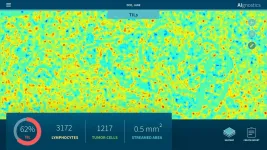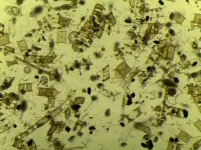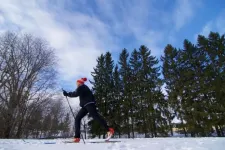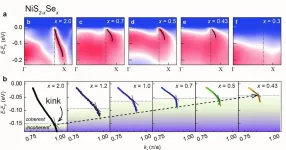Making the role of AI in medicine explainable
Analysis system for the diagnosis of breast cancer
2021-03-09
(Press-News.org) Researchers at Charité - Universitätsmedizin Berlin and TU Berlin as well as the University of Oslo have developed a new tissue-section analysis system for diagnosing breast cancer based on artificial intelligence (AI). Two further developments make this system unique: For the first time, morphological, molecular and histological data are integrated in a single analysis. Secondly, the system provides a clarification of the AI decision process in the form of heatmaps. Pixel by pixel, these heatmaps show which visual information influenced the AI decision process and to what extent, thus enabling doctors to understand and assess the plausibility of the results of the AI analysis. This represents a decisive and essential step forward for the future regular use of AI systems in hospitals. The results of this research have now been published in Nature Machine Intelligence*.
Cancer treatment is increasingly concerned with the molecular characterization of tumor tissue samples. Studies are conducted to determine whether and/or how the DNA has changed in the tumor tissue as well as the gene and protein expression in the tissue sample. At the same time, researchers are becoming increasingly aware that cancer progression is closely related to intercellular cross-talk and the interaction of neoplastic cells with the surrounding tissue - including the immune system.
Although microscopic techniques enable biological processes to be studied with high spatial detail, they only permit a limited measurement of molecular markers. These are rather determined using proteins or DNA taken from tissue. As a result, spatial detail is not possible and the relationship between these markers and the microscopic structures is typically unclear. "We know that in the case of breast cancer, the number of immigrated immune cells, known as lymphocytes, in tumor tissue has an influence on the patient's prognosis. There are also discussions as to whether this number has a predictive value - in other words if it enables us to say how effective a particular therapy is," says Prof. Dr. Frederick Klauschen of Charité's Institute of Pathology.
"The problem we have is the following: We have good and reliable molecular data and we have good histological data with high spatial detail. What we don't have as yet is the decisive link between imaging data and high-dimensional molecular data," adds Prof. Dr. Klaus-Robert Müller, professor of machine learning at TU Berlin. Both researchers have been working together for a number of years now at the national AI center of excellence the Berlin Institute for the Foundations of Learning and Data (BIFOLD) located at TU Berlin.
It is precisely this symbiosis which the newly published approach makes possible. "Our system facilitates the detection of pathological alterations in microscopic images. Parallel to this, we are able to provide precise heatmap visualizations showing which pixel in the microscopic image contributed to the diagnostic algorithm and to what extent," explains Prof. Müller. The research team has also succeeded in significantly further developing this process: "Our analysis system has been trained using machine learning processes so that it can also predict various molecular characteristics, including the condition of the DNA, the gene expression as well as the protein expression in specific areas of the tissue, on the basis of the histological images.
Next on the agenda are certification and further clinical validations - including tests in tumor routine diagnostics. However, Prof. Klauschen is already convinced of the value of the research: "The methods we have developed will make it possible in the future to make histopathological tumor diagnostics more precise, more standardized and qualitatively better."
INFORMATION:
*Binder A et al. Morphological and molecular breast cancer profiling through explainable machine learning. Nat Mach Intell (2021), doi: 10.1038/s42256-021-00303-4
[Attachments] See images for this press release:

ELSE PRESS RELEASES FROM THIS DATE:
2021-03-09
People with unhealthy heart structures and poorer functioning hearts have a significantly higher risk of being diagnosed with COVID-19 infection, according to research by Queen Mary University of London, in collaboration with the Medical Research Council Lifecourse Epidemiology Unit (The University of Southampton).
The researchers made use of the comprehensive and internationally unique UK Biobank database, which includes health and genetic information from over half a million participants from across the UK, including detailed magnetic resonance imaging (MRI) of their hearts as well as linkages to COVID-19 test results from Public Health England.
The team investigated records from 310 Biobank participants to see whether pre-existing features of the heart ...
2021-03-09
In light of the United Nations (UN) declaration that 2021-2030 is the UN Decade on Ecosystem Restoration, a group of scientists voice concerns about restoration in heavily fragmented landscapes under a hotter and drier future scenario.
Poor recovery of small fragments will end up costing management and wider society later down the line. Millions are invested in setting aside patches, but management is then weak and costly.
Rainforests turn into oil palm plantations
The past 40 years in Southeast Asia have seen about 50% of lowland rainforests converted to oil palm and other plantations, and much of the remaining forest heavily logged.
Little is known about how fragmentation influences recovery and whether climate change will hamper restoration.
"Here, we use repeat airborne ...
2021-03-09
Scientists have pinpointed the location of an essential enzyme in plant cells involved in photosynthesis, according to a study published today in eLife.
The findings overturn conventional thinking about where the enzyme resides in plant cells and suggest a probable role in regulating energy processes as plants adapt from dark to light conditions.
During photosynthesis, plants convert carbon into energy stores through 'electron transport', involving an enzyme called ferredoxin:NADP(H) oxidoreductase, or FNR.
Plants can switch rapidly between two types of electron transport - linear electron flow (LEF) and cyclic electron ...
2021-03-09
Gas and liquid separation processes in the chemical industry could be made more efficient and environmentally friendly by using substances known as intrinsically porous materials (IPMs). KAUST researchers review the prospects for IPMs in the journal Accounts of Chemical Research.
Niveen Khashab and her team are currently heavily involved in IPM research. "We focus on making materials that will have an impact on the chemical and petrochemical industries in Saudi Arabia and the world," says Niveen Khashab, the corresponding author of the review.
IPM materials can separate gases and liquids without using traditional ...
2021-03-09
The annually occurring algal spring blooms play an important role for our climate, as they remove large amounts of carbon dioxide from the atmosphere. However, they are an ephemeral phenomenon. Most of the carbon is released into the water once the algae die. There, bacteria are already waiting to finish them off and consume the algal remains.
Previous studies have shown that in these blooms, different algae can come out on top each year. However, within the bacteria subsequently degrading the algae, the same specialised groups prevail year after year. Apparently not the algae themselves but rather their components ...
2021-03-09
According to an international study published in Frontiers in Psychology, people around the world have reported changes in their physical activity levels, wellbeing, and eating habits during the first stages of the COVID-19 pandemic. A decrease in physical activity during the pandemic was associated with poorer perceived physical and mental health. Reduced exercise was also associated with perceptions of weight gain and decreased sleep.
More than a thousand individuals from several countries with different containment measures participated in an online survey that explored changes in physical activity, eating, sleep, physical and mental health, and wellbeing during the first lockdown phases ...
2021-03-09
A RAND Corporation report funded by The Rockefeller Foundation shows that COVID-19 testing can be effectively integrated into K-12 schools' pandemic response plans, helping families and staff feel more comfortable with in-person instruction.
The report found that even for well-resourced districts and schools, launching a COVID-19 testing program was a major undertaking that required access to rapid-turnaround tests, additional staffing or strong partners for logistical support, technical assistance for the design and execution of testing programs, and a strategy for successfully engaging the school community to participate ...
2021-03-09
Adding a simple polymer to fertilizers or pesticides could dramatically reduce agricultural pollution, suggests a new study by researchers at the University of British Columbia.
When agrochemicals are sprayed onto crops, a large amount typically ends up in the surrounding environment due to droplets splashing, rebounding or rolling off the target plants.
This amount could be cut at least in half by mixing fertilizers and pesticides with a small quantity of polyethylene oxide, a common polymer additive that improves the ability of agrochemical solutions to stick to plant surfaces, ...
2021-03-09
CORVALLIS, Ore. - A quarter-century-old harvesting restriction intended to last one year has served as an obstacle to returning eastern Oregon national forests to the healthier, more fire-resilient conditions they embodied in the late 1800s, research by the Oregon State University College of Forestry shows.
The findings, published in Ecosphere, are both important and timely because the U.S. Forest Service recently revised what has widely become known as the "21-inch rule" - a prohibition against cutting trees greater than 21 inches in diameter at breast height on Forest Service land in eastern Oregon.
"Under the old policy, live trees more than 21 inches in diameter ...
2021-03-09
Strongly correlated systems are materials that exhibit strong interactions between electrons, a property unseen in ordinary conductors or insulators. Typical examples include metal-insulator transitions or unconventional high-temperature superconductivity where the resistance becomes zero at high temperatures.
There have been studies to explain this strong interaction between electrons and their characteristic energy scales, but no direct observation on such energy scales through theory or experiments has been reported. To this, the POSTECH-IBS joint research team has succeeded in directly observing the evolution of coherence energy ...
LAST 30 PRESS RELEASES:
[Press-News.org] Making the role of AI in medicine explainable
Analysis system for the diagnosis of breast cancer





